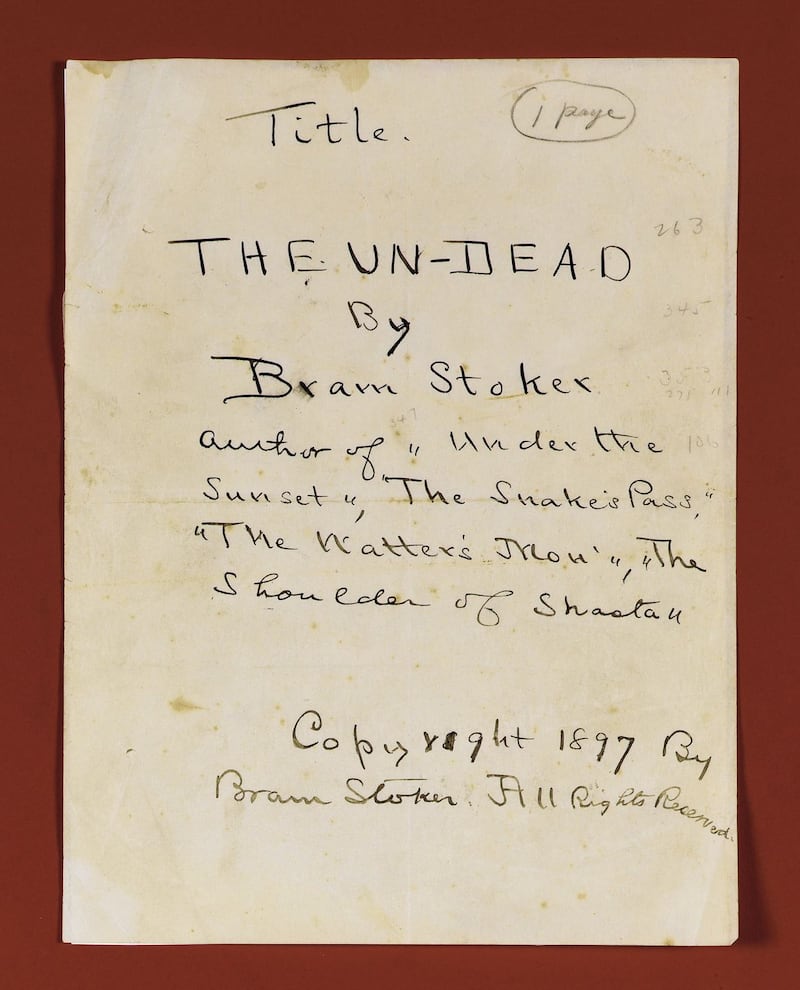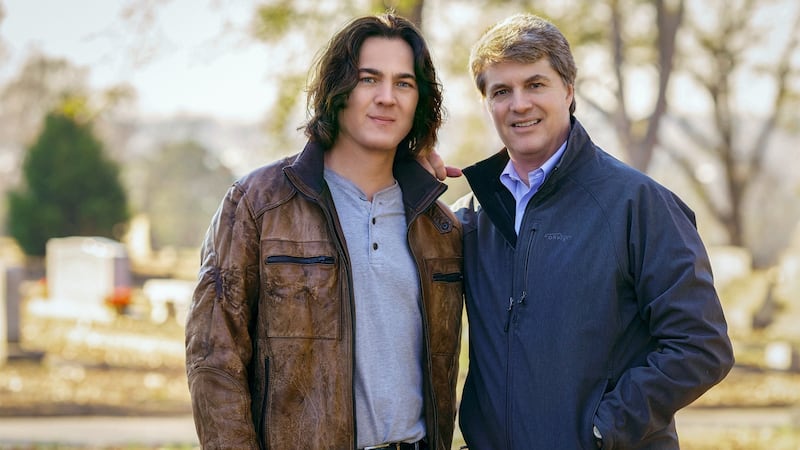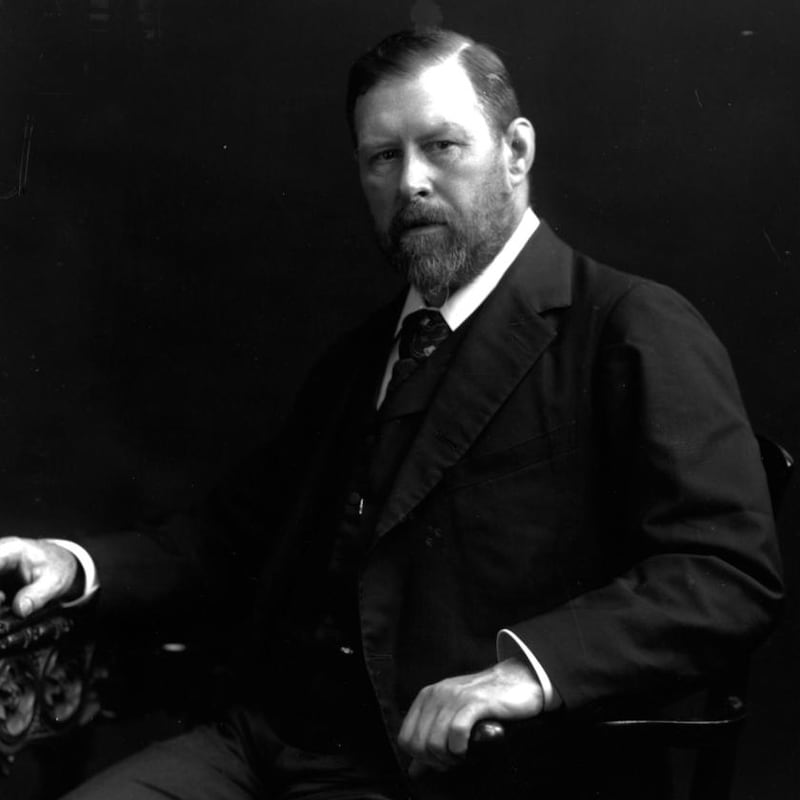Consider it a sort of literary detective job. When Dacre Stoker, great-grandnephew of Dracula author Bram Stoker, discovered that 101 pages had been cut from the beginning of that book’s manuscript prior to publication in 1897, the revelation sparked ideas for a possible prequel. Further investigations unearthed a lost journal of Stoker’s which provided significant insight into his life and work as a clerk in Dublin and later as a theatre manager in London. Finally, a (closely supervised) reading of the original annotated Dracula manuscript, which Microsoft co-founder Paul Allen had bought at a private auction some years ago, further fuelled Dacre’s curiosity.
The result of all this research is Dracul, co-written by Dacre and JD Barker, following on from Dracula the Un-dead, Dacre's sequel to the original, published in 2009. Bram Stoker himself is the new book's main protagonist, recast at the centre of his own mythology after Dacre read an unpublished preface to the original manuscript which claimed that all the events described within the book were true (a not-uncommon device among Victorian-era Gothic novelists).
The Irish social landscape described in Dracul includes cholera epidemics, famine and poverty, which create a claustrophobic, dread-infused atmosphere
As the novel begins, we are introduced to Stoker as a sickly child growing up in Famine-stricken Clontarf, confined to his bedroom, abandoned to the ministrations of a mysterious nursemaid, Ellen Crone, whose secret treatments of the boy result in a drastic transformation of his health and spirits. As the story gains impetus and ramps up into a gung-ho horror page-turner, Stoker the historical figure morphs into Stoker the vampire slayer.
"All the research, the conferences, reading the biographies, that all set me up for doing lectures on Bram, and that put me in a position to fictionalise this story of him writing Dracula," Stoker says, speaking from his home in South Carolina. "That's when I decided I needed to hunt down JD Barker."

Ghost writer
Barker, author of three bestsellers, might be regarded as something of an overnight success in the world of horror and suspense fiction, except he'd logged two decades working as a music journalist, ghost writer and book doctor before the publication of his debut novel Forsaken in 2014.
"I had six different books that hit the New York Times bestseller list over 23 years," he says, joining us from Pittsburgh, "and that kind of weighs on you after a while, seeing other people's names on something you put so much time into. So my wife convinced me to write Forsaken, and I got crazy lucky with that book: it got nominated for the Bram Stoker Award for best debut novel by the Horror Writers' Association. Dacre happened to be presenting that award that year, so we ran into each other at the conference a couple of times and ended up sitting next to each other for an hour at one of those signing things, and he started talking about some of the stuff I had done in the past. I had no idea that it was more of an audition than anything. He had read Forsaken, and his family had read it, and apparently they'd been looking for someone to write a prequel to Dracula with Dacre, using Bram's original notes and his journals. We ended up going out to breakfast on the last day there, and he sprung this on me, and of course I said yes."
What followed was a crash course in Stoker marginalia. By a way of assimilating the author’s voice, Barker read everything in the canon, as well as listening to audiobooks on repeat in order to absorb the cadences of Stoker’s prose style.
"We ended up going up to Dacre's mountain cabin in the Carolinas," he recalls. "He disappeared for a little bit and came back with this box, and it was literally the stuff that Bram would have had on his desk when he wrote the book: copies of his journal, copies of the notes, tons of material that I had never seen before. And he told me about the original preface in which Bram told everybody the story was actually true, and that the first 101 pages of the novel had been stripped out by the publisher. And as we started going through Bram's notes we realised that was where the real story was, and that's where Dracul was born."

Real-life horrors
The Irish social landscape described in Dracul evokes its own litany of real-life horrors: cholera epidemics, famine, poverty. The result is a claustrophobic and dread-infused atmosphere not all that far from Poe.
Dacre: “The Irishness of the story really started with Bram’s lost journal, found in the Isle of Wight in one of his great-grandsons’ home. That journal was only an 11-year period, but we jumped on what we had. We needed to paint a picture of what was going on in Ireland at the time. Bram was born in Black ’47, and he was a sickly young boy. The first seven years of his life, outside his front door in Clontarf and Artane, things were pretty bloody rough. We wanted to accurately portray that, but we couldn’t have it dominate the story. We [also] had to describe how the Stoker family were getting along. They were a very interesting family. The father was working in Dublin Castle and the different brothers trained as doctors and the sisters were artists, the mother was a social activist. His oldest brother, who is featured in the story, was president of the Royal College of Surgeons. And knighted. That was a pretty big deal.
“So we needed to bring this musty, Gothic Dublin to life, but also the inside world of Bram’s mysterious early illness. When Bram recovered, he became a champion athlete at Trinity in a wide variety of sports, from race-walking to rowing, gymnastics, rugby. He also grew to be two inches taller than anyone else in the family. This was a little bit strange. So maybe, like Lance Armstrong, Bram had some interaction with some secret concoction that helped him turn into a champion athlete. It doesn’t take long to figure out that the main topic of his famous book is vampires, that the property of vampire blood gives you the strength of 10 men. That’s where we began to blend the fact and the fiction together.”
The book also describes the horror the young Stoker felt at hearing the tale of a premature burial of a cholera victim during the 1832 epidemic in Sligo. This, the authors contend, seeded early visions of the undead returning from the grave.
"Bram actually asked his mom to send him that story later on in his life, so he could incorporate it into a book called Under the Sunset," Dacre confirms. "And we did research on some of the Irish folklore stories that Bram would have been told by the nurse/nanny Ellen Crone."

Deathbed
Barker: "Imagine a kid, four or five or six years old, hearing these kinds of stories when he's lying in what's possibly his deathbed with 103 fever – you can see how that would impact somebody. I'm sure the Dearg Due story was in the back of his mind when he researched Dracula, and it followed him through the bulk of his life."
And the original Dracula was, despite (or because of) the Victorian climate in which it was written, extremely erotic and sexually charged.
“Bram was a man who knew his audience and was very sensitive to everything around him,” Dacre says. “He knew how to put bums in seats at the Lyceum Theatre, he knew how to work with [Henry] Irving on what plays to bring in, how to alter them a little bit so that they would get people in England really buzzing. He knew that during the time of writing this novel that people were scared to death because the Jack the Ripper murders had been going on, the reverse colonisation, and he was sensitive to all the sexuality issues that you’re talking about. People were on edge, and he realised how to capitalise on it. In his day, the lifting of the chin and the piercing of the throat and the fluid exchange, that was very risqué, and I think Bram was pushing the envelope.”
Which may go some way towards explaining why for years Stoker was whitewashed from the official literary canon in this country. You rarely see him on tourist board posters extolling Shaw, Joyce, Beckett and Wilde.
Dacre: "Dracula was finally highlighted at the One City One Book festival that Dublin Public Library put on in 2009. There was this gathering of Dracula aficionados, some relatives, and we talked about that poster, and that you go into the tourist stores and there's nothing to do with Bram. We're thrilled to death that there's a finally a bronze bust in the Dublin Writers Museum that Brian Moore created with a GoFundMe campaign, and there's Beatrice Stewart, another Stoker distant cousin who had made three busts, and one of the public libraries purchased one of Bram's medals that he was awarded at Trinity. So things are beginning to shift."
Dracul is published by Transworld


















